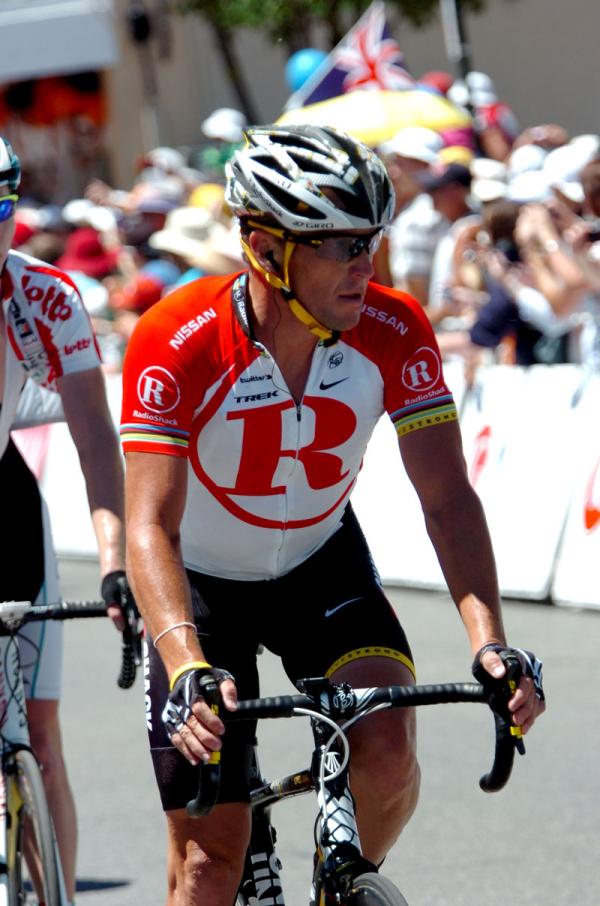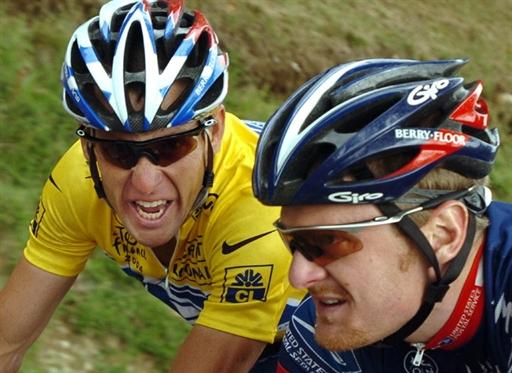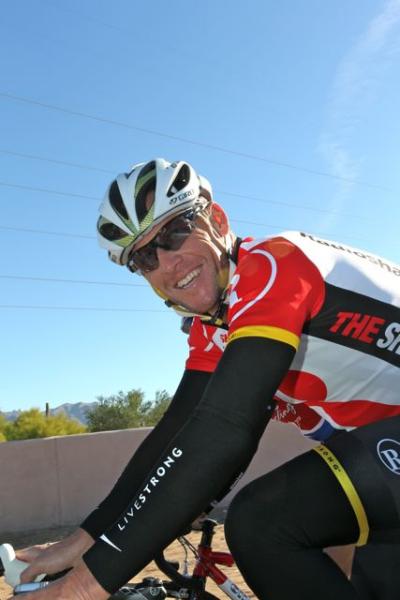A summary of the Sports Illustrated Lance Armstrong investigation
The Case against Lance Armstrong



Sports Illustrated has published its full investigation into Lance Armstrong on its website under the title of the ‘The Case against Lance Armstrong’.
The article is over 5700 words long and includes new and old accusations against Armstrong from a wide range of sources, including details of the questioning of Armstrong’s long-standing teammate Yaroslav Popovych in Italy and further revelations by Floyd Landis and Stephen Swart.
The article lifts the lid on Armstrong's relationship with Anti-doping expert Don Catlin and reports details of a letter exchange that reveals unusual testosterone-epitestosterone ratio test results found in three of Armstrong’s urine samples. The article also suggests Armstrong gained access to the experimental blood boosting drug HemAssist.
Armstrong refused to answer questions about the accusations before the start of the second stage of the Tour Down Under, only saying: "I perused it... there's nothing there."
Armstrong has yet to be formally involved in the FDA investigation but Selena Roberts, one of the two journalists who wrote the article has suggested in a video interview on ESPN.com that that could occur as soon as February.
The key points of the SI investigation:
The Sports Illustrated article claims that sources familiar with the FDA investigation have discovered that Armstrong had access to the blood boosting drug HemAssist during clinical trials in the USA. The drug trials were ended after several patients died but athletes apparently tried to buy HemAssist because it does not raise blood haematocrit and has a very short half life, making it almost impossible to detect.
Get The Leadout Newsletter
The latest race content, interviews, features, reviews and expert buying guides, direct to your inbox!
Armstrong’s lawyers claimed it was impossible for Armstrong to have access to the drug but Sports Illustrated suggested that stockpiles of the drug may have remained.
Sports Illustrated claims that Italian police and customs officials discovered performance enhancing drugs when they searched Popovych's home, as well as texts and e-mails that link Armstrong to Dr Michele Ferrari as recently as 2009. Armstrong claimed he had cut all ties with Ferrari after the Italian doctor was found guilty of sporting fraud. Ferrari was later cleared due to the four-year statue of limitations rule of Italian law. Ferrari refused to respond to the accusations when contacted by Sports Illustrated.
Perhaps the most significant section of the story regards Armstrong’s relationship with Professor Don Catlin, the former head of the US Anti-doping laboratory at UCLA. He has been a member of the IOC Medical Commission since 1988 and is also credited with identifying the THG designer drug made famous during the BALCO investigation.
Catlin left UCLA in 2007 and created his own business with his son. In 2009 he agreed to run the internal testing programme at Armstrong’s Astana team. However the programme ended after five months due to problems over costs. Armstrong was only tested once.
SI report that the US Anti-Doping lab tested Armstrong more than two dozen times between 1990 and 2000. In 1999 USA Cycling asked Catlin to supply results of testosterone tests. Catlin claimed that there was little chance of recovering five results from the early nineties but detailed three results that stand out: "a 9.0-to-1 ratio from a sample collected on June 23, 1993; a 7.6-to-1 from July 7, 1994; and a 6.5-to-1 from June 4, 1996.”
Any ratio above 6.0-to-1 was considered abnormally high until 2005 and since then the ratio limit was lowered to 4.0-to-1. Floyd Landis tested positive for testosterone at the 2006 Tour de France with a report ratio of 11-1.
Catlin told USA Cycling that he tried to confirm the two highest values with further testing but was unable to do so and declared they were negative. Catlin told SI that he did not know the samples belonged to Armstrong but admitted that the three high testosterone ratios detailed in the letter as ‘very strange’.
Armstrong has always claimed he has never taken performance-enhancing drugs and has never tested positive.
Further revelations by Floyd Landis’ also appear in the article.
Sports Illustrated report an incident when Landis flew with Armstrong to Switzerland on a private jet. He claims customs officers searched their bags and that “Lance had a bag of drugs and s…” Landis claims a member of Armstrong’s contingent spoke to the officers and persuaded them the drugs were vitamins.
Armstrong’s lawyers denied the event ever happened.
SI also give details of the dispute over claims that Armstrong admitted taking performance enhancing drugs to doctors treating him for cancer. Betsy and Frankie Andreu testified under oath that they heard Armstrong say he took EPO, growth hormone, cortisone, steroids and testosterone. Oakley representative Stephanie McIlvain has always denied hearing Armstrong admit to taking drugs.
SI points out that during the 2005 SCA arbitration case -a dispute between Armstrong and SCA Promotions about payment of a £5 million Tour de France bonus after allegations of doping, that McIlvain's deposition lasted 103 minutes but claim her appearance at the Federal inquiry last seven hours.
Many of Armstrong's former teammates have also been questioned in front of a grand jury as part of the FDA investigation. Most have publicly denied they ever saw Armstrong take drugs but New Zealand’s Stephen Swart has spoken out.
Swart says he took EPO but admits he never saw Armstrong or another teammate from the Motorola team take the drug. However he claims that during internal blood testing on July 17, 1995, “Lance was at 54 or 56 (blood haematocrit percentage).” In 2001 the UCI introduced a limit of 50%, while an average male value is around 43%.
Armstrong's spokesman Mark Fabiani told Cyclingnews, "The story is filled with old news, recycling the same old tired lies from the same old tired liars".
A spokesman from Sports Illustrated told Cyclingnews, "We stand by the reporting in the story."